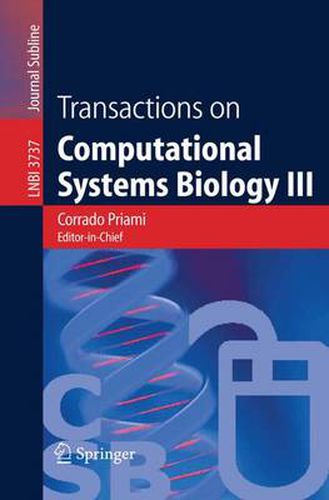Readings Newsletter
Become a Readings Member to make your shopping experience even easier.
Sign in or sign up for free!
You’re not far away from qualifying for FREE standard shipping within Australia
You’ve qualified for FREE standard shipping within Australia
The cart is loading…






This title is printed to order. This book may have been self-published. If so, we cannot guarantee the quality of the content. In the main most books will have gone through the editing process however some may not. We therefore suggest that you be aware of this before ordering this book. If in doubt check either the author or publisher’s details as we are unable to accept any returns unless they are faulty. Please contact us if you have any questions.
In the last few decades, advances in molecular biology and in the research - frastructure in this ?eld has given rise to the omics revolution in molecular biology,alongwiththeexplosionofdatabases:fromgenomicstotranscriptomics, proteomics, interactomics,and metabolomics. However,the huge amount of b- logicalinformationavailablehasleftabottleneckindataprocessing:information over?ow has called for innovative techniques for their visualization, modelling, interpretationandanalysis.The manyresultsfromthe ?eldsofcomputerscience andengineeringhavethenmetwithbiology,leadingto new,emergingdisciplines such as bioinformatics and systems biology. So, for instance, as the result of - plicationoftechniquessuchasmachinelearning,self-organizingmaps,statistical algorithms,clusteringalgorithmsandmulti-agentsystemstomodernbiology,we can actually model and simulate some functions of the cell (e.g., protein inter- tion, gene expression and gene regulation), make inferences from the molecular biology database, make connections among biological data, and derive useful predictions. Today, and more generally, two di?erent scenarios characterize the po- genomic era. On the one hand, the huge amount of datasets made available by biological research all over the world mandates for suitable techniques, tools and methods meant at modelling biological processes and analyzing biological sequences. On the other hand, biological systems work as the sources of a wide range of new computational models and paradigms, which are now ready to be applied in the context of computer-based systems.
$9.00 standard shipping within Australia
FREE standard shipping within Australia for orders over $100.00
Express & International shipping calculated at checkout
This title is printed to order. This book may have been self-published. If so, we cannot guarantee the quality of the content. In the main most books will have gone through the editing process however some may not. We therefore suggest that you be aware of this before ordering this book. If in doubt check either the author or publisher’s details as we are unable to accept any returns unless they are faulty. Please contact us if you have any questions.
In the last few decades, advances in molecular biology and in the research - frastructure in this ?eld has given rise to the omics revolution in molecular biology,alongwiththeexplosionofdatabases:fromgenomicstotranscriptomics, proteomics, interactomics,and metabolomics. However,the huge amount of b- logicalinformationavailablehasleftabottleneckindataprocessing:information over?ow has called for innovative techniques for their visualization, modelling, interpretationandanalysis.The manyresultsfromthe ?eldsofcomputerscience andengineeringhavethenmetwithbiology,leadingto new,emergingdisciplines such as bioinformatics and systems biology. So, for instance, as the result of - plicationoftechniquessuchasmachinelearning,self-organizingmaps,statistical algorithms,clusteringalgorithmsandmulti-agentsystemstomodernbiology,we can actually model and simulate some functions of the cell (e.g., protein inter- tion, gene expression and gene regulation), make inferences from the molecular biology database, make connections among biological data, and derive useful predictions. Today, and more generally, two di?erent scenarios characterize the po- genomic era. On the one hand, the huge amount of datasets made available by biological research all over the world mandates for suitable techniques, tools and methods meant at modelling biological processes and analyzing biological sequences. On the other hand, biological systems work as the sources of a wide range of new computational models and paradigms, which are now ready to be applied in the context of computer-based systems.